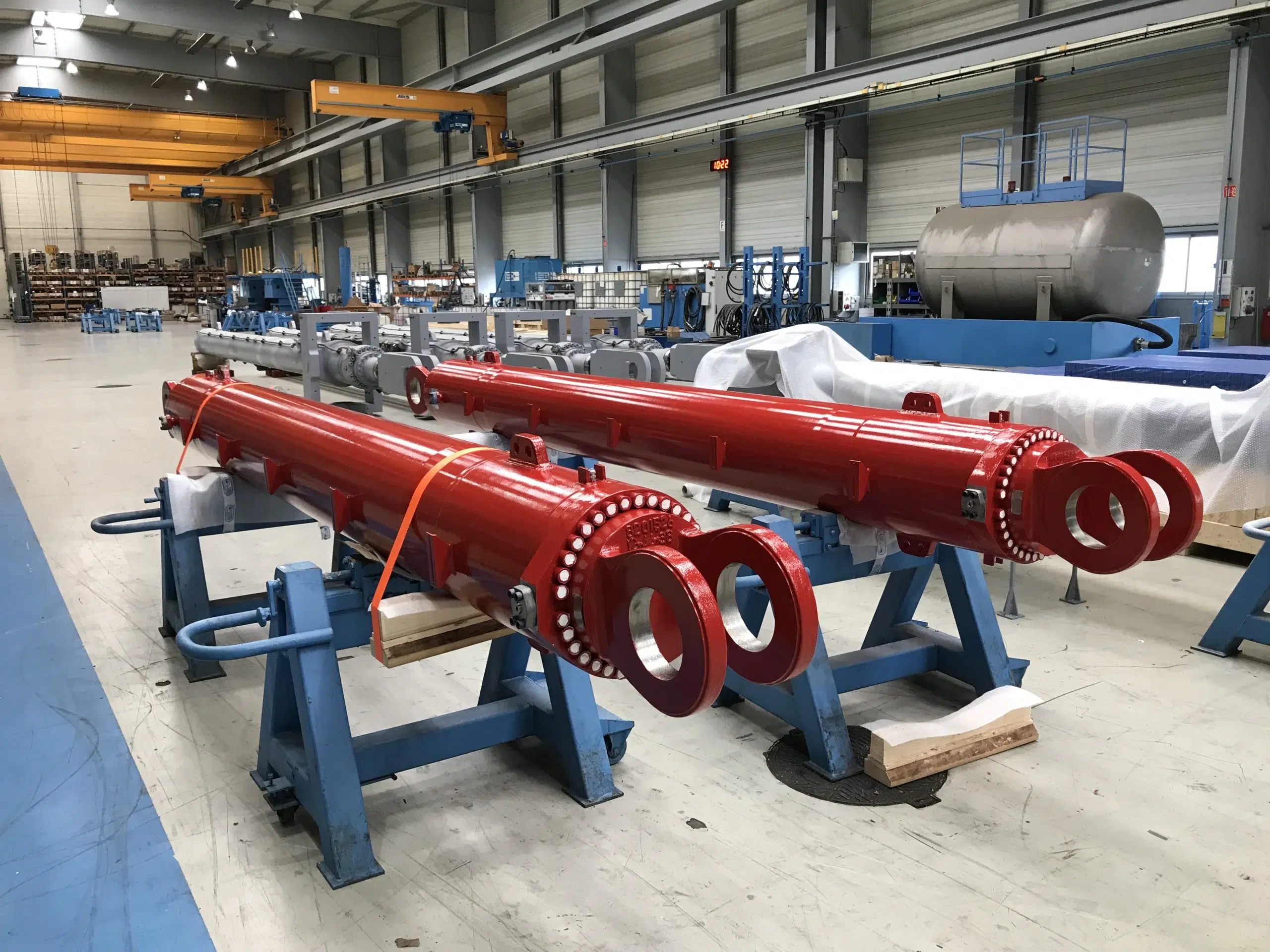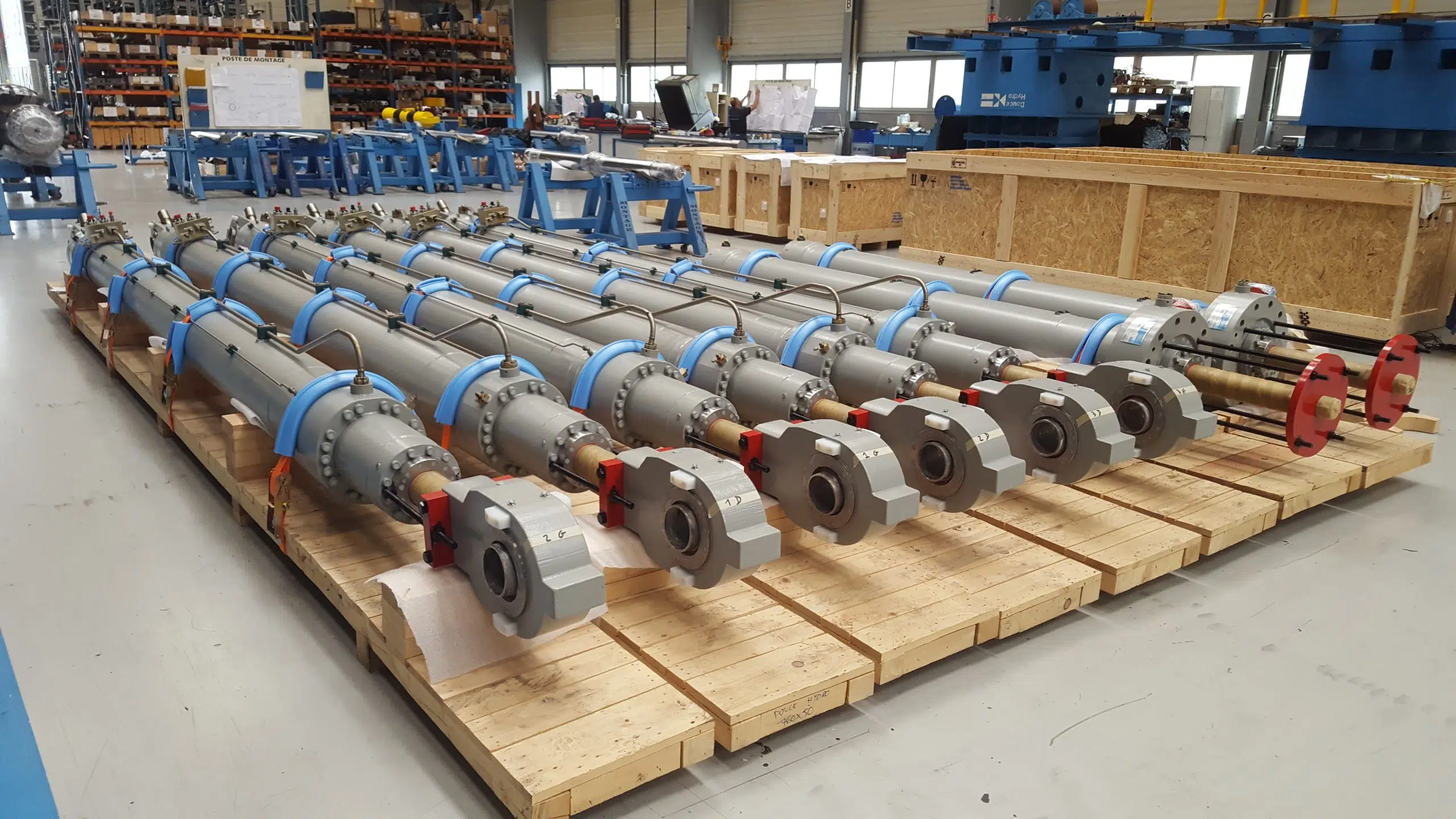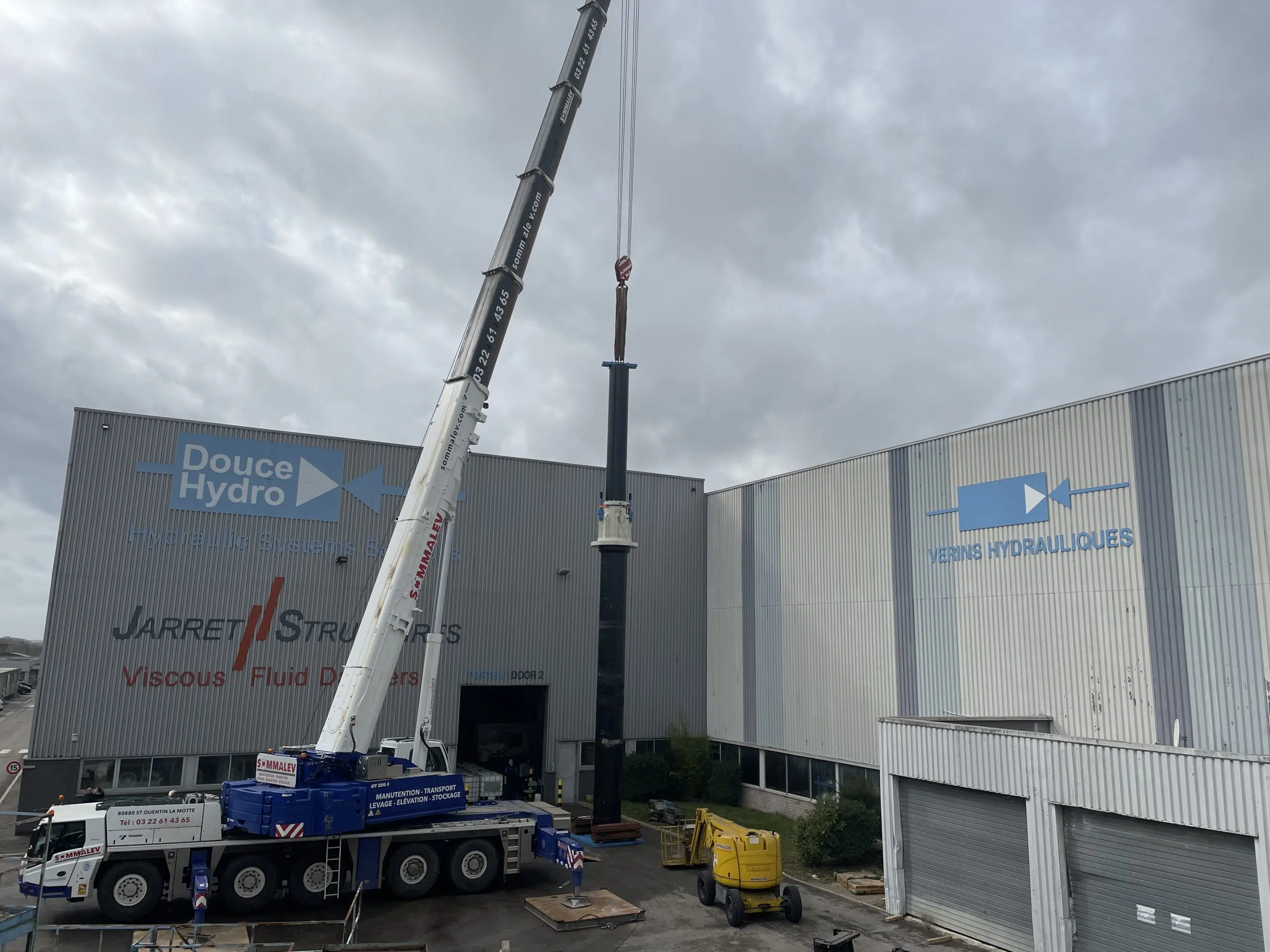Hydraulic cylinders, whether single- or double-acting, play a central role in many industrial applications, converting hydraulic energy into mechanical energy. These components are essential for producing precise movements and delivering forces at different speeds.
The single-acting hydraulic cylinder is designed to generate movement in a single direction, using mechanical or spring return to return to its initial position. By contrast, the double-acting hydraulic cylinder, with its ability to operate in two directions, offers greater versatility. The latter is particularly suited to mobile equipment, where precise, reversible movements are required.
Specializing in the design and manufacture of hydraulic systems, Douce-Hydro offers double-acting hydraulic cylinders perfectly adapted to the specific requirements of each application. Whether for standard industrial needs or customized solutions, our equipment guarantees performance and reliability.
Discover our wide range of single-acting cylinders
Douce-Hydro offers a wide range of single-acting hydraulic cylinders, suitable for many professional applications. Unlike double-acting cylinders, these operate in one direction only, using hydraulic pressure for tasks such as lifting, tilting or other linear movements.
Douce-Hydro offers reliable, high-performance solutions for both light lifting applications and more complex tasks involving the movement of very large structures.
Select a single-acting hydraulic cylinder according to your needs
Choosing the right single-acting hydraulic cylinder is crucial to ensuring optimum performance in specific applications:
Single-acting cylinders are frequently used in lifting systems requiring unidirectional linear motion. For example, on tipper trucks, a single-acting cylinder may be used to lift the swap body during unloading. On other commercial vehicles, single-acting cylinders are used to stabilize and control the movement of platforms, telescopic arms or aerial platforms.
Single-acting cylinders are also used to open and close automatic gates, locks and dams.
On an industrial conveyor, single-acting cylinders are used to move loads in a specific direction, as in distribution or sorting systems coupled to a conveyor belt.
Single-acting cylinders are widely used on hydraulic presses for a variety of applications: metal extrusion presses, compression presses for thermosetting materials, hydraulic presses for stamping, forging or calibration, etc…
The load capacity of the single-acting cylinder is one of the crucial points to consider before placing an order. Single-acting cylinders designed and produced by Douce-Hydro offer a wide range of technical possibilities.
The cylinder rod is another essential element that determines the load capacity of the device. A rod of the right diameter will determine the performance of the entire installation. Douce-Hydro is able to configure cylinder rods of different sizes to provide its customers with cylinders capable of adapting to the specific requirements of each industrial application.
When placing your order, Douce-Hydro will study your project and also determine the pressure level at which your hydraulic cylinder will have to operate to fulfill its role safely: for common applications, a single-acting hydraulic cylinder generally supports pressures ranging from 140 to 250 bar.
Step-by-step design with the experts at Douce-Hydro
Customer service is a priority for Douce-Hydro. The company is committed to providing complete support, from the initial design of the single hydraulic cylinder to on-site installation.
Douce-Hydro relies on a dedicated engineering department. Made up of specialists in hydraulic engineering, this department works closely with each customer to understand and analyze their specific needs. Its team of experts uses cutting-edge technologies and design software to develop hydraulic cylinders that perfectly match the customer’s wishes and comply with specifications.
At Douce-Hydro, quality control is another essential step in the manufacturing process. Each single-acting hydraulic cylinder undergoes a series of rigorous tests and inspections to ensure it meets the highest quality standards. This process includes performance tests, checks on material conformity, and final inspections to ensure maximum reliability and safety. This control is a guarantee of durability and performance.
What is a double-acting hydraulic cylinder?
A double-acting hydraulic cylinder is a mechanical device powered by hydraulic fluid. This product is configured to move in two directions, hence the term “double-acting”. This refers to the cylinder’s ability to produce movement in both directions.
The heart of the double-acting hydraulic cylinder comprises a cylinder, piston, rod and hydraulic fluid. The piston divides the cylinder into two separate chambers, each filled with pressurized oil. When hydraulic pressure is applied to one of the chambers, the piston moves in one direction, causing the rod to extend in the opposite direction.
When pressure is applied to the other chamber, the movement reverses, causing the rod to retract.
The action of the double-acting hydraulic cylinder gives precise control over movement: a quality that makes it particularly suitable for a wide range of industrial applications.
The hydraulic cylinder rod plays a key role in this “double-acting” mechanism. It is usually attached to the piston and extends through one end of the cylinder.
Rod diameter and stroke directly influence cylinder performance: a larger rod diameter potentially increases the cylinder’s load capacity. The stroke defines the total distance the rod can travel.


Which hydraulic cylinder for which need?
Choosing the right double-acting hydraulic cylinder depends on a number of factors: the load to be moved, the travel distance and the frequency of use.
Rod diameter is another important criterion to consider when selecting a cylinder: a larger diameter will generally support heavier loads, but it can also affect the speed of movement.
Another parameter to consider is the hydraulic pressure level. It determines the magnitude of the force exerted by the double-acting cylinder. Higher pressure allows you to handle greater loads: however, it is essential to comply with system specifications to avoid damage.
The stroke of the cylinder, i.e. the maximum distance the rod can travel, must also be taken into account. It’s vital to choose a stroke that’s adapted to the specific use for which the “double-acting” hydraulic cylinder is intended. An inappropriate choice can lead to performance or safety problems.
Thanks to its design office and hydraulic engineering experts, Douce-Hydro can determine with extreme precision which type of “double-acting” hydraulic cylinder is best suited to your needs.
Characteristics and importance of double-acting hydraulic cylinders
The characteristics of the double-acting hydraulic cylinder multiply its industrial applications. Its ability to produce movement in two directions explains its versatility. Double-acting hydraulic cylinders can be adapted to a variety of needs: they can be used to lift heavy loads, move heavy objects, or exert a controlled force.
In the machine-tool sector, double-acting hydraulic cylinders are used to provide a multiplicity of movements, such as the forward and backward movement of cutting tool blades. They help automate manufacturing processes and improve operational efficiency.
Construction equipment such as hydraulic excavators, bulldozers and cranes frequently use double-acting hydraulic cylinders to perform precise movements: arm lifting, boom rotation and bucket tilting.
Hydraulic presses are equipped with “double-acting” hydraulic cylinders to exert a controlled force when forming, punching or compressing materials.
In the construction and public works sectors, some heavy-duty vehicles such as site trucks and lifting vehicles incorporate double-acting hydraulic cylinders to facilitate precise, powerful movements when lifting a bucket or deploying a telescopic arm.
Double-acting hydraulic cylinders are, of course, widely used in industrial companies.
